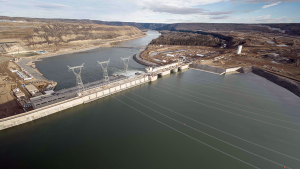Engineers and Geoscientists British Columbia (EGBC), which regulates and governs those professions in B.C., recently concluded disciplinary action against Vancouver engineer John Bryson.
EGBC found that Bryson’s 2013 structural design of a 40-storey strata condo residential tower in suburban Surrey failed to meet the building code in effect in the province at the time.
The building in question, called Ultra, is located at 13325 102a Ave., near the Surrey Central Skytrain station.
According to EGBC spokeswoman Megan Archibald, the association began an investigation of Bryson in 2014, after it had received a complaint regarding Bryson’s structural design of the building.
“All information about complaints that we receive is confidential,” said Archibald. “Our investigation confirmed that the building was not built to the required codes and standards, but it did not evaluate the overall performance of the building.”
Bryson admitted in an EGBC consent order that he demonstrated unprofessional conduct and acted contrary to the association’s code of ethics.
The EGBC’s code of ethics lists 10 “basic tenets” that members and licensees are expected to uphold.
First on the list is, “Hold paramount the safety, health, and welfare of the public, the protection of the environment, and promote health and safety within the workplace.”
Vancouver lawyer Seema Lal, a principal of SHK Law Corporation, said, “There is also a recognized common law duty of care owed by engineers to take reasonable care not to create a hazard that will cause physical harm to members of the public in preparing their designs.”
Formerly a senior partner of BMZ Structural Engineers in Vancouver, Bryson is no longer listed on the company’s website.
In the signed consent order, he made three admissions of failure:
First, that his design for the building did not comply with the 2006 BC Building Code, in particular with respect to seismic and wind loads;
Second, that he used certain less conservative requirements from the National Building Code 2010; and
Third, he failed to ensure that an appropriate independent review of his design was completed.
The BC Building Code (BCBC) establishes the minimum standards for design and construction of buildings in the province, except in Vancouver, where the City of Vancouver Building Bylaw applies.
Although BCBC is based substantially on the National Building Code (NBC), buildings in B.C. must meet the provincial requirements in force at the time the building is designed and constructed. BCBC 2018, which is based on NBC 2015, is in effect now.
Bryson was charged with unprofessional conduct and resigned his engineering license.
Bryson must pay a fine of $25,000, as well as $215,000 to EGBC towards costs.
In an announcement, EGBC’s CEO and registrar, Ann English, said
“The public deserves to have confidence that their homes are being designed to the current standard, and it’s a serious matter when that trust is betrayed. This individual [Bryson] failed to meet the professional and ethical standards required of him as a professional engineer.”
Like ripples in a pond, the effects of the disciplinary decision are being seen outside the engineering community.
Following its decision, EGBC notified building permitting officials of municipalities and regional districts across B.C. of the consent order.
The City of Surrey was informed of the investigation and was provided with the expert reports obtained by the association as they were completed.
In an announcement, Rémi Dubé, manager of the building division in Surrey’s planning and development department, said, “The city relies on letters of assurance provided by the professionals who designed the building, such as John Bryson, which confirm the building had been designed and constructed according to the BC Building Code.
“In this situation, when it was determined that the building was not built to code, the city followed up with the strata corporation to determine if there were any safety issues that would impact occupancy. There is no information of any present public safety concerns.
“The city will be meeting with the strata corporation to discuss appropriate next steps.”
In an announcement posted on its website, the Architectural Institute of BC (AIBC) told its members, “This matter may be of concern to architects who have provided or are providing services on projects associated with Mr. Bryson.”
AIBC has detailed advice to architects who had worked with Bryson on completed projects (“Architects may also want to consider whether to contact their insurers”), or were working on projects with him now (“All ongoing projects will require transition to a new structural engineer. Architects are advised to recommend to their clients that a review of the previous work be included in the new engineer’s scope of work.”)











Recent Comments